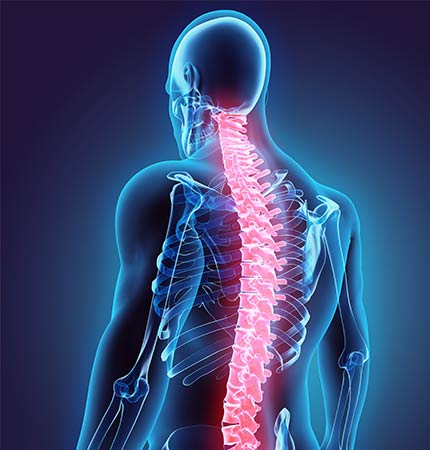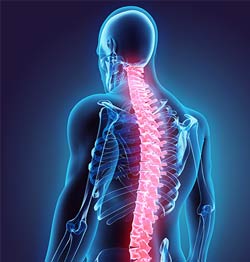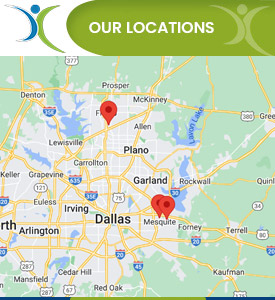Lower Back Pain Treatment Specialist Serving Frisco, Sunnyvale, and Mesquite, TX
Pain in the lower back has become common. It may be caused by a strain or injury to the back muscles or tendons. Visit Dr. Andrew H. Morchower, M.D., M.P.H. at OmniSpine Pain Management for the right care if your back pain is frequent and appears to be becoming worse with time. For more information, contact us or book an appointment online. We have convenient locations to serve you in Frisco, TX, Sunnyvale, TX, and Mesquite, TX.


Table of Contents:
What causes lower back pain?
What are my options for treating back pain?
Can I prevent back pain?
Who is at risk for injuring their lower back?
Lower back pain can have various causes, including:
● Muscle or ligament strain – Overstretching or tearing of the muscles or ligaments in the lower back can result from improper lifting, sudden movements, and poor posture.
● Herniated or bulging discs – The discs between the vertebrae can rupture or bulge, pressing on nearby nerves and causing lower back pain. This can occur due to age-related wear and tear or injury.
● Scoliosis – An abnormal spine curvature can lead to lower back pain, especially if the curve becomes severe.
● Spinal stenosis – Narrowing of the spinal canal puts pressure on the nerves, leading to lower back pain. This condition is often the result of age-related spine degeneration.
● Arthritis – Conditions such as osteoarthritis and rheumatoid arthritis can affect the lower back, causing pain, stiffness, and inflammation.
● Other factors – Other causes of lower back pain include hernias, kidney stones, infections, fibromyalgia, and cancer.
There are various options available for treating back pain. The ideal option will depend on the cause and severity of your condition. Some treatment options include:
● Physical therapy – A physical therapist can provide exercises and techniques to improve flexibility, strengthen muscles, and promote proper body mechanics to alleviate back pain.
● Medications – Over-the-counter pain relievers like acetaminophen and nonsteroidal anti-inflammatory drugs (NSAIDs) can reduce pain and inflammation. Prescription medications may be recommended for severe pain or specific conditions.
● Epidural Steroid Injection (ESI) – These injections deliver anti-inflammatory medication directly into the space around the spinal nerves to relieve discomfort and inflammation.
● Complementary therapies – Acupuncture and massage therapy provide pain relief and promote relaxation and flexibility.
● Surgery – In severe cases where conservative treatments have not been effective, surgery may be recommended to address specific conditions such as herniated discs, spinal stenosis, and spinal deformities.
While it may not be possible to prevent all instances of back pain, there are steps you can take to reduce the risk of conditions that cause it:
● Maintain proper posture – Practice proper posture when sitting, standing, and lifting objects. Avoid slouching and hunching forward, as this strains the back muscles and leads to pain.
● Exercise regularly – Engage in regular physical activity to strengthen your back muscles. Focus on exercises that promote core strength, flexibility, and good posture.
● Maintain a healthy weight – Excess weight puts additional strain on your back, increasing the risk of pain and injury.
● Avoid prolonged sitting – Take breaks and move around if your job requires long periods of sitting. Incorporate walking into your routine to prevent muscle stiffness and promote circulation.
● Use ergonomic equipment – Ensure your workspace is ergonomically designed, with a chair that provides proper lumbar support and a desk at an appropriate height.
● Practice stress management – Chronic stress can contribute to muscle tension and back pain. Find healthy ways to manage stress, such as relaxation techniques or exercise.
Anyone can injure their lower back, but certain factors increase your risk. Some groups of people are more susceptible to lower back injuries, including:
● Older adults – With age, the spine undergoes natural degeneration, including loss of disc elasticity and reduced bone density. This makes you more prone to injury.
● People with poor posture – Slouching, hunching, or maintaining improper alignment places stress on the lower back, increasing the risk of strain or injury.
● Manual laborers – Jobs that involve heavy lifting, repetitive movements, or prolonged standing can strain the lower back.
● Sedentary individuals – Lack of regular physical activity weakens the muscles that support the lower back and makes them more vulnerable to injury.
● Overweight individuals – Carrying excess weight puts additional strain on the lower back.
● Athletes – Sports that involve repetitive movements, impact, or twisting motions can lead to lower back injuries due to improper technique or accidents.
While these groups are at a higher risk, anyone can experience lower back pain. Practicing good body mechanics, maintaining a healthy lifestyle, and seeking professional guidance when needed will minimize your risk of lower back problems.
At OmniSpine Pain Management, Dr. Andrew H. Morchower, M.D., M.P.H., and his dedicated team have extensive experience in diagnosing and treating lower back issues. For more information, contact us or book an appointment online. You can visit us at our clinics located in Frisco, TX, Sunnyvale, TX, and Mesquite, TX. We serve patients from Dallas TX, Frisco TX, Mesquite TX, Sunnyvale TX, Plano TX, Garland TX, Forney TX, Cedar Hill TX, Denton TX, Balch Springs TX, and surrounding areas.





